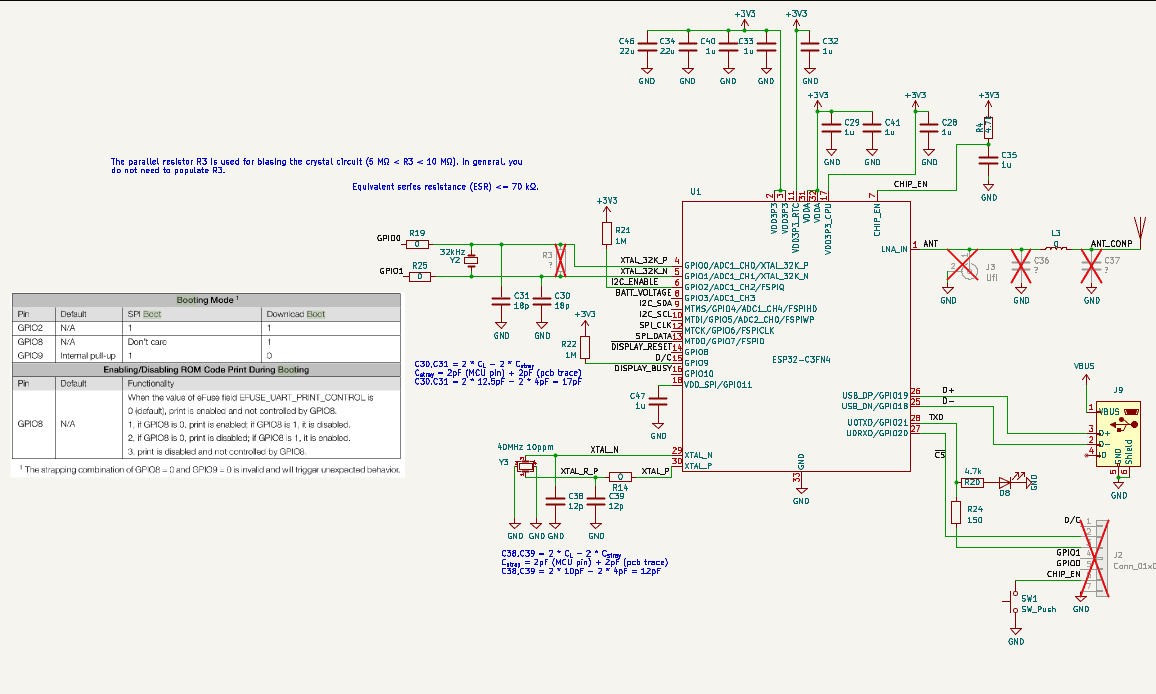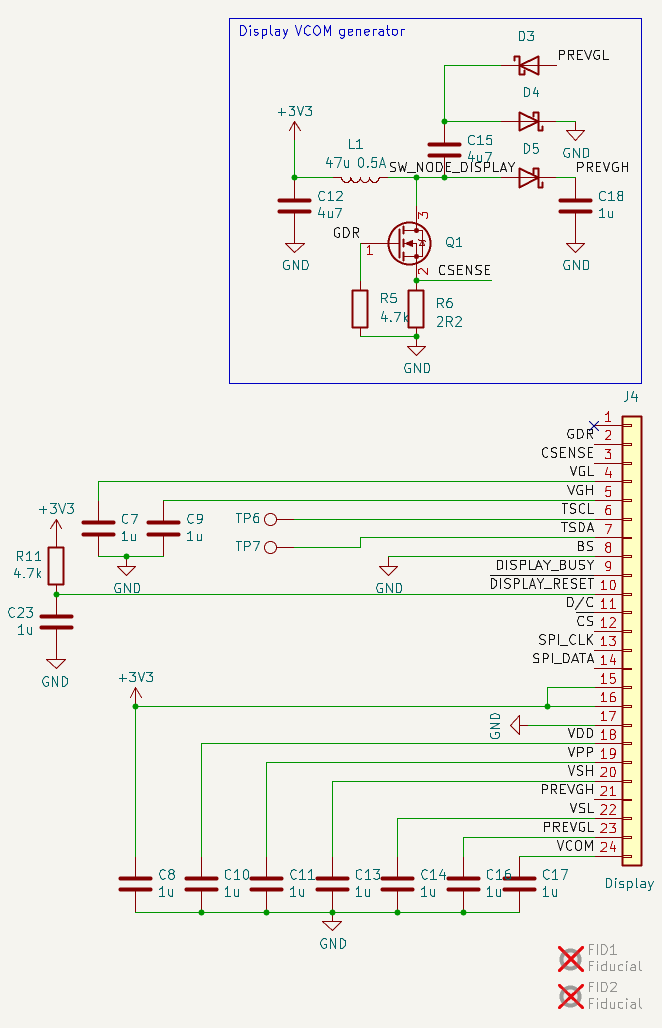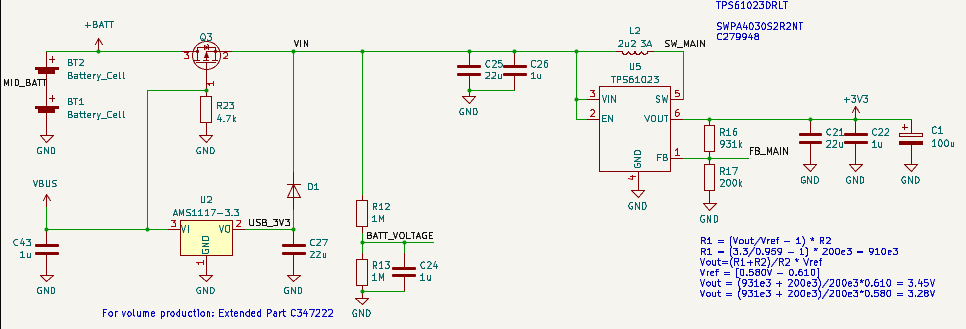ESP32C3 supporting components is basically just following ESP32C3 Family Hardware Design Guidelines. There's a footprint for 32kHz crystal, but since it's not supported in Arduino environment, also pins are broken out as GPIO.
 Display power conditioning circuit is also provided in a datasheet from GooDisplay
Display power conditioning circuit is also provided in a datasheet from GooDisplay Power section is designed to take in both USB and battery power. U5 is a boost converter and Q3 is responsible for disconnecting batteries when powered form USB and provide reverse polarity protection.
Power section is designed to take in both USB and battery power. U5 is a boost converter and Q3 is responsible for disconnecting batteries when powered form USB and provide reverse polarity protection.
Power to I2C sensors is switched via transistor to save some Coulombs

 Albertas Mickėnas
Albertas Mickėnas
Discussions
Become a Hackaday.io Member
Create an account to leave a comment. Already have an account? Log In.